
◼ A gene participates in three major activities: 1. Information Storing 2. Replication 3. Accumulating mutations 第四章 DNA的复制
◼ A gene participates in three major activities: 1. Information Storing 2. Replication 3. Accumulating mutations 第四章 DNA的复制
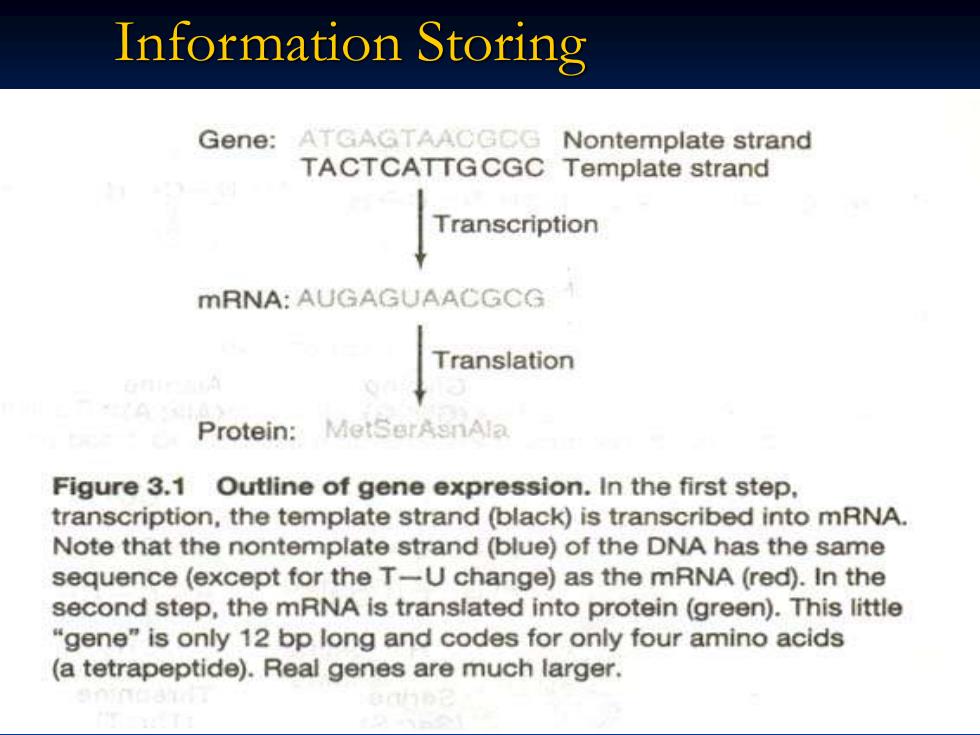
Information Storing
Information Storing
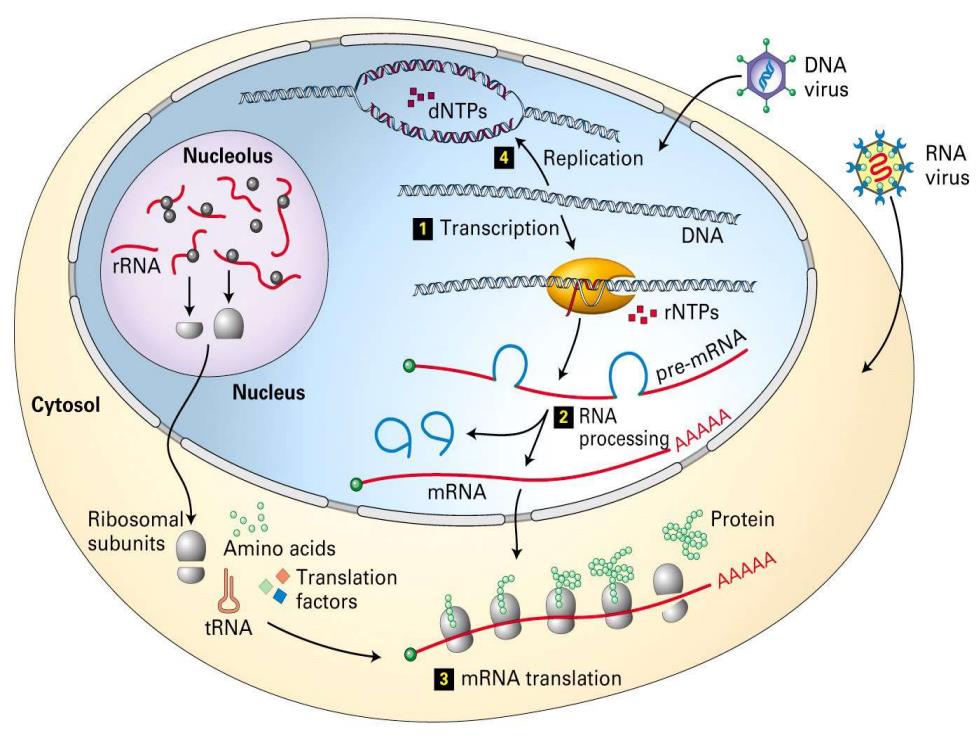
N处0N YYY DNA aNTPe X0n N代N人 Nucleolus 4 Replication RNA nN00NL0八00元0N0风Y virus 8 1Transcription DNA rRNA 代 a·rNTPs pre-mRNA Nucleus Cytosol prsin 2RNA mRNA Ribosomaly Protein subunits Amino acids ◆Translation ◆。factors AAAAA tRNA 8) 3mRNA translation
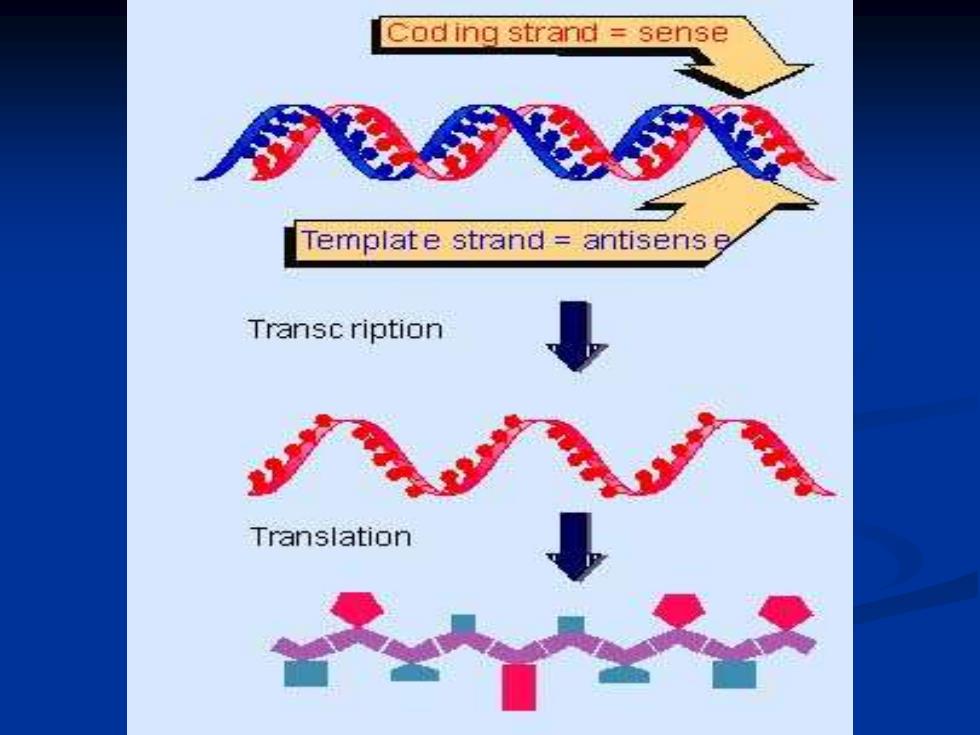
Coding strand sense Template strand antisens e Transc ription Translation
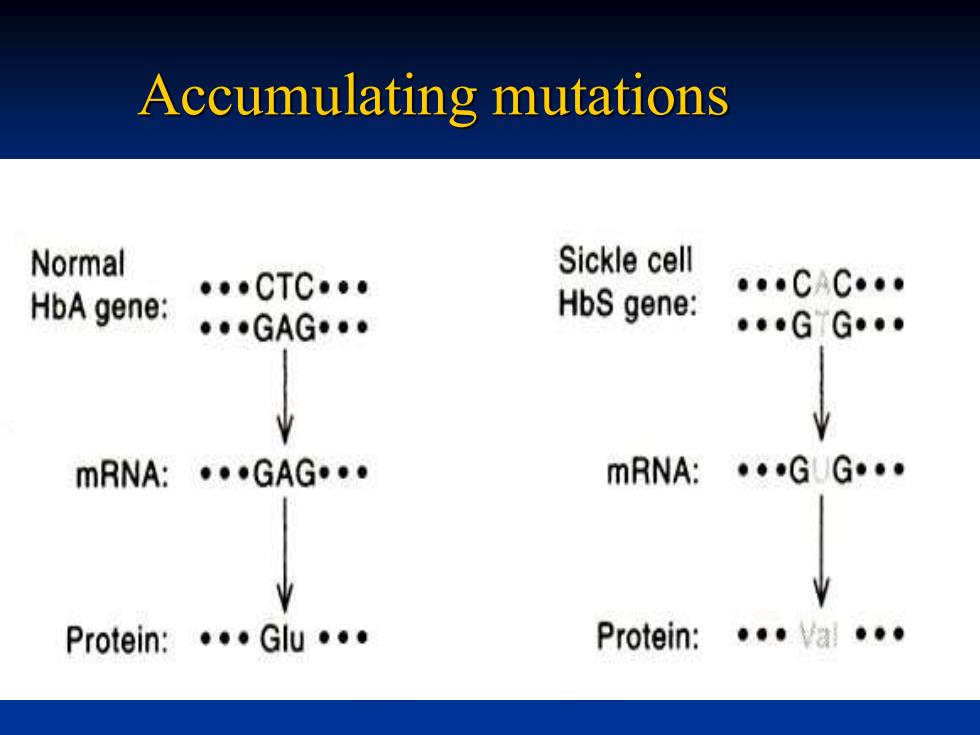
Accumulating mutations
Accumulating mutations
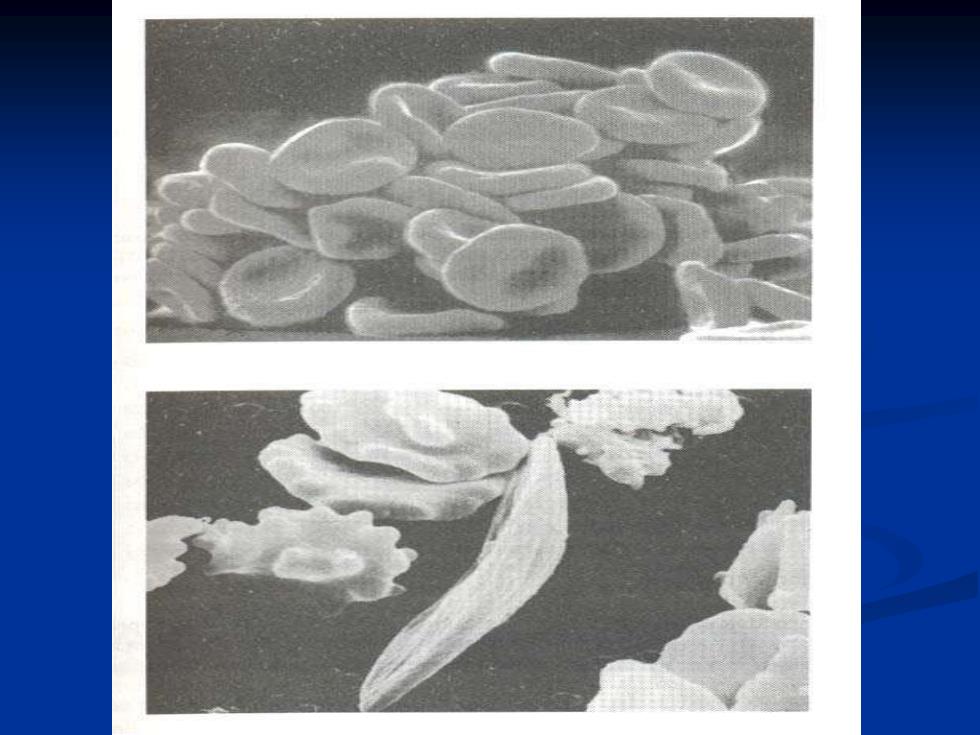
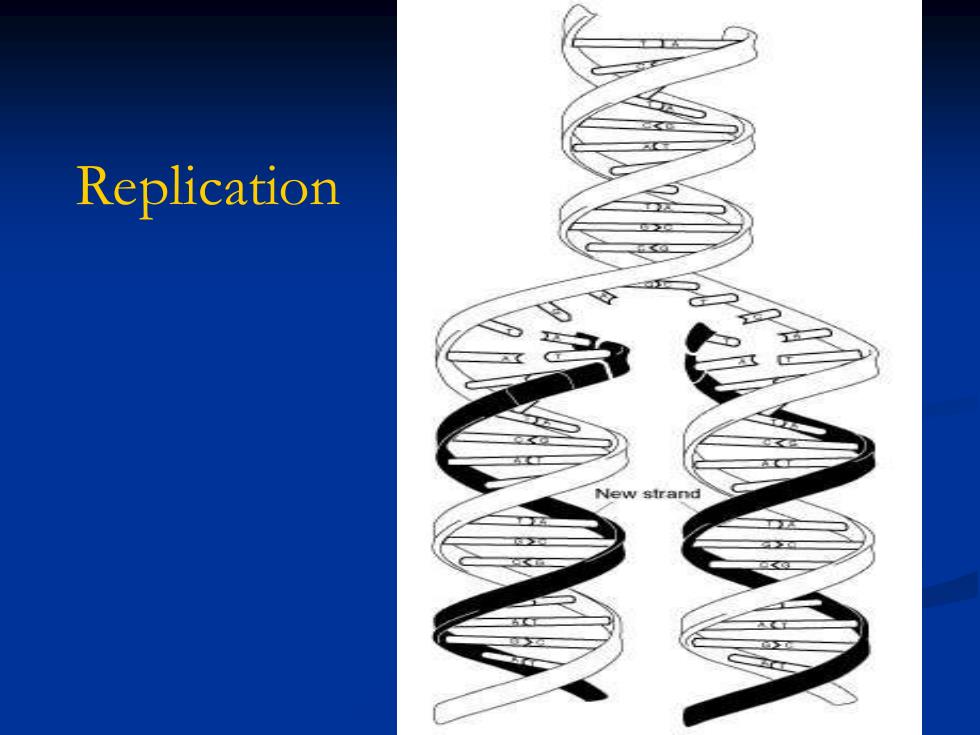
Replication
Replication
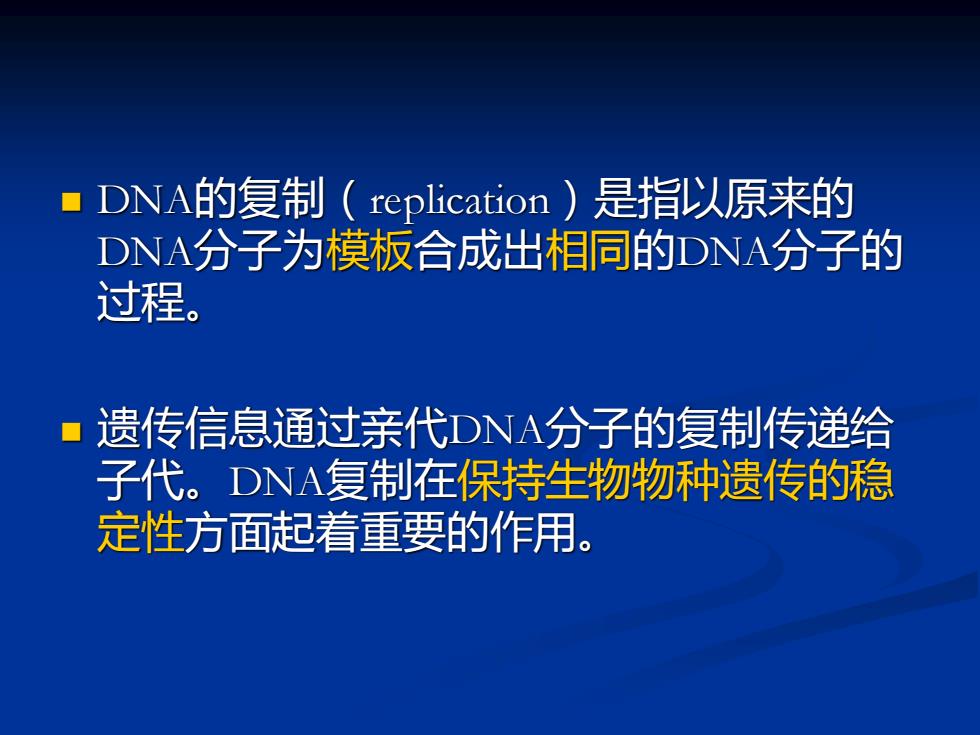
◼ DNA的复制(replication)是指以原来的 DNA分子为模板合成出相同的DNA分子的 过程。 ◼ 遗传信息通过亲代DNA分子的复制传递给 子代。DNA复制在保持生物物种遗传的稳 定性方面起着重要的作用
◼ DNA的复制(replication)是指以原来的 DNA分子为模板合成出相同的DNA分子的 过程。 ◼ 遗传信息通过亲代DNA分子的复制传递给 子代。DNA复制在保持生物物种遗传的稳 定性方面起着重要的作用
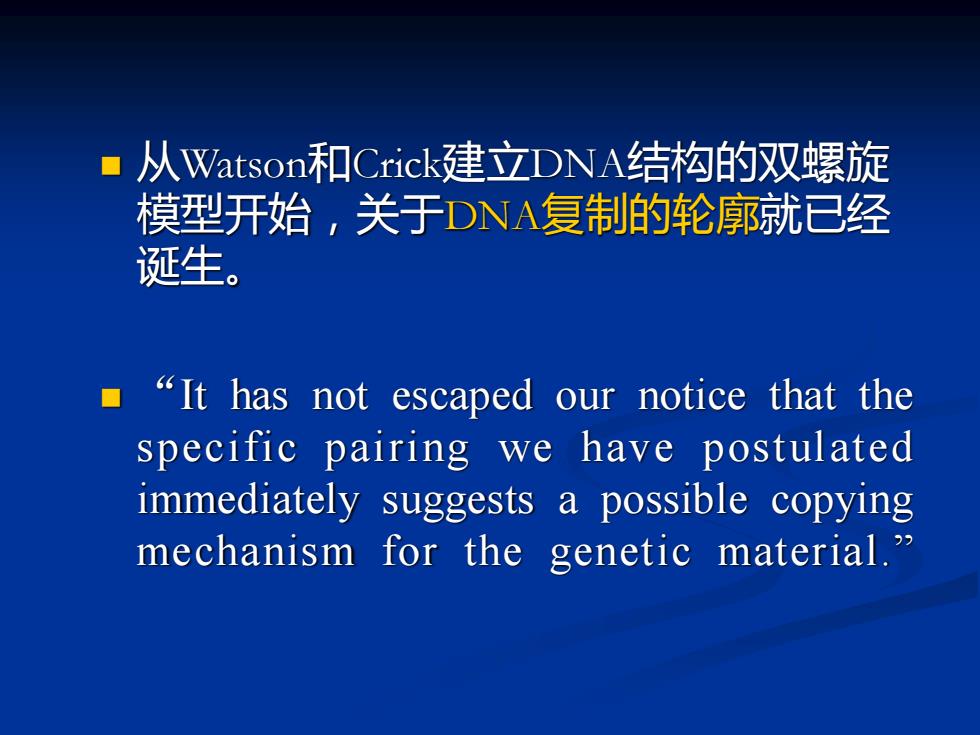
◼ 从Watson和Crick建立DNA结构的双螺旋 模型开始,关于DNA复制的轮廓就已经 诞生。 ◼ “It has not escaped our notice that the specific pairing we have postulated immediately suggests a possible copying mechanism for the genetic material
◼ 从Watson和Crick建立DNA结构的双螺旋 模型开始,关于DNA复制的轮廓就已经 诞生。 ◼ “It has not escaped our notice that the specific pairing we have postulated immediately suggests a possible copying mechanism for the genetic material

◼ “Now our model for deoxyribonucleic acid is, in effect, a pair of templates, each of which is complementary to the other. We imagine that prior to duplication the hydrogen bonds are broken, and the two chains unwind and separate. Each chain then acts as a template for the formation onto itself of a new companion chain, so that eventually we shall have two pairs of chains, where we only had one before. Moreover, the sequence of the pairs of bases will have been duplicated exactly
◼ “Now our model for deoxyribonucleic acid is, in effect, a pair of templates, each of which is complementary to the other. We imagine that prior to duplication the hydrogen bonds are broken, and the two chains unwind and separate. Each chain then acts as a template for the formation onto itself of a new companion chain, so that eventually we shall have two pairs of chains, where we only had one before. Moreover, the sequence of the pairs of bases will have been duplicated exactly